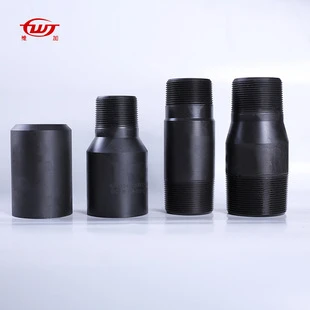- Afrikaans
- Albanian
- Amharic
- Arabic
- Armenian
- Azerbaijani
- Basque
- Belarusian
- Bengali
- Bosnian
- Bulgarian
- Catalan
- Cebuano
- Corsican
- Croatian
- Czech
- Danish
- Dutch
- English
- Esperanto
- Estonian
- Finnish
- French
- Frisian
- Galician
- Georgian
- German
- Greek
- Gujarati
- Haitian Creole
- hausa
- hawaiian
- Hebrew
- Hindi
- Miao
- Hungarian
- Icelandic
- igbo
- Indonesian
- irish
- Italian
- Japanese
- Javanese
- Kannada
- kazakh
- Khmer
- Rwandese
- Korean
- Kurdish
- Kyrgyz
- Lao
- Latin
- Latvian
- Lithuanian
- Luxembourgish
- Macedonian
- Malgashi
- Malay
- Malayalam
- Maltese
- Maori
- Marathi
- Mongolian
- Myanmar
- Nepali
- Norwegian
- Norwegian
- Occitan
- Pashto
- Persian
- Polish
- Portuguese
- Punjabi
- Romanian
- Russian
- Samoan
- Scottish Gaelic
- Serbian
- Sesotho
- Shona
- Sindhi
- Sinhala
- Slovak
- Slovenian
- Somali
- Spanish
- Sundanese
- Swahili
- Swedish
- Tagalog
- Tajik
- Tamil
- Tatar
- Telugu
- Thai
- Turkish
- Turkmen
- Ukrainian
- Urdu
- Uighur
- Uzbek
- Vietnamese
- Welsh
- Bantu
- Yiddish
- Yoruba
- Zulu
Understanding Casing Pup Joints for Efficient Oil and Gas Operations
Understanding Casing Pup Joints A Key Component in Oil and Gas Operations
Casing pup joints play a vital role in the oil and gas industry. These short lengths of pipe, typically ranging from 2 to 10 feet in length, are used to connect different sections of casing strings. The casing itself serves as a critical structural component that supports the wellbore and isolates various layers of rock and fluid, ensuring the safety and efficiency of drilling operations.
The Importance of Casing Pup Joints
Casing pup joints serve several purposes in drilling and completion operations. First and foremost, they accommodate changes in tubing length that occur due to thermal expansion, pressure changes, or during the installation of various downhole tools. This capability is essential in adapting the casing string to the specific needs of the wellbore, including adjusting for depth or accommodating specific geological formations.
Moreover, pup joints can also be crucial in protecting the integrity of the well. By providing flexibility, they help reduce the stress on the casing string caused by downhole pressure fluctuations, temperature variations, and mechanical loads. This reduces the risk of casing failure, which can lead to significant operational downtime and costly repairs.
Specifications and Material Considerations
Casing pup joints come in various sizes and materials to suit the specific requirements of different wells. They are typically made from carbon steel, stainless steel, or alloy steel, depending on the corrosive properties of the fluids encountered and the temperature and pressure conditions of the well. The selection of appropriate materials ensures durability and resistance to wear and corrosion, extending the life of the joint and minimizing maintenance costs.
casing pup joint

The wall thickness of pup joints can also vary, and this is an important consideration when designing the casing system. A thicker wall provides added strength and resistance to collapse, particularly in high-pressure wells. Engineers must carefully calculate the required specifications to match the geological environment and operational conditions of the well.
Installation and Maintenance
The installation of casing pup joints is a straightforward process but requires adherence to best practices to ensure seal integrity and proper alignment. It typically involves thread connections, which are carefully sealed to prevent leaks. Regular inspections during and after installation allow operators to identify potential issues early, ensuring the longevity of the installation.
Maintenance of casing pup joints is also critical. Operators must monitor for signs of wear, such as corrosion, pitting, or thread degradation. Regular maintenance checks can prevent failures that could lead to costly repairs or environmental hazards.
Conclusion
In summary, casing pup joints are essential components in the configuration of oil and gas wells. Their ability to adapt to various operational conditions while providing structural support makes them indispensable in modern drilling practices. With advancements in material technology and engineering design, the effectiveness and reliability of casing pup joints continue to improve, helping operators maximize efficiency and ensure the safety of their well operations. Understanding and properly implementing casing pup joints is crucial for any operator aiming for success in the challenging environment of oil and gas exploration and production.
-
Tubing Pup Joints: Essential Components for Oil and Gas OperationsNewsJul.10,2025
-
Pup Joints: Essential Components for Reliable Drilling OperationsNewsJul.10,2025
-
Pipe Couplings: Connecting Your World EfficientlyNewsJul.10,2025
-
Mastering Oilfield Operations with Quality Tubing and CasingNewsJul.10,2025
-
High-Quality Casing Couplings for Every NeedNewsJul.10,2025
-
Boost Your Drilling Efficiency with Premium Crossover Tools & Seating NipplesNewsJul.10,2025







